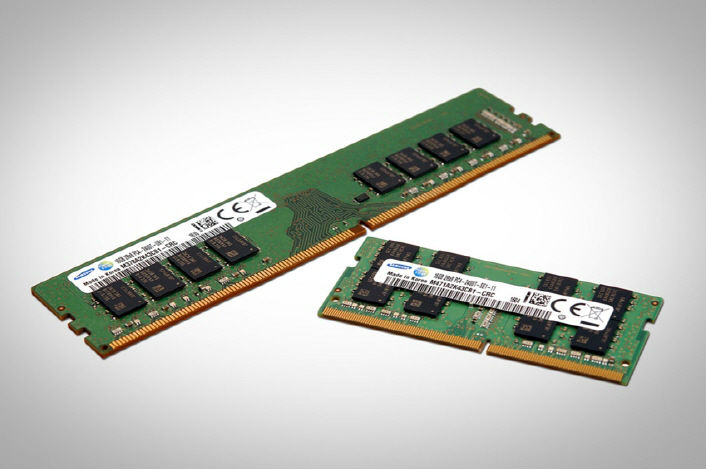DRAM Market Expected to Fall This Year, Samsung Losing Lead
IHS Markit, a London-based market research firm, this week said that due to low demand, the DRAM market is expected to fall 22 percent year-over-year in 2019. Some of the top DRAM makers have previously announced that they will reduce supply, as high inventories have led to pricing wars after a couple of years of surging DRAM prices.
DRAM Demand Still Low
Over the past several quarters, DRAM makers have seen increased memory inventories as demand decreased. It doesn’t look like DRAM demand will increase in 2019, so some DRAM makers, including Samsung and Micron, have promised to lower the output to match the low demand.
“In fact, most memory chip manufactures are taking measures to manage supply output and inventory levels, to address softening demand," Rachel Young, associate director at IHS, said in a statement accompanying the announcement.
Currently, the highest demand for DRAM chips comes from the server market, followed by mobile, IHS said. This is despite the smartphone market slowing since 2016. In the server space, by 2023, IHS expects more than half of DRAM bit demand to come from public cloud services companies, such as Amazon, Google and Microsoft. This is compared to the server market representing 28 percent of DRAM bit demand in 2018.
According to IHS, supply and demand growth will stay "in the 20 percent range in the coming years," making the market relatively balanced.
Samsung's Market Lead Is Shrinking
Even though Samsung was one of the first DRAM chip makers to announce a reduction in supply last September, it continues to lead the DRAM industry by a significant (albeit shrinking) margin, IHS said. In Q4 2018, Samsung had 39.9 percent market share, but sales had declined 26.5 percent quarter-to-quarter. IHS said while Samsung is still the DRAM leader, its lead had shrunken in Q4.
In terms of market share for that quarter, SK Hynix came in second with 31.9 percent, followed by Micron (24 percent) and Nanya (2.5 percent).
Get Tom's Hardware's best news and in-depth reviews, straight to your inbox.
Last week, Micron announced that it will cut the production of both DRAM and NAND flash chips by 5 percent this year. The primary reasons given for this were high inventory due to low demand and “worse than expected CPU shortages.”
Lucian Armasu is a Contributing Writer for Tom's Hardware US. He covers software news and the issues surrounding privacy and security.
